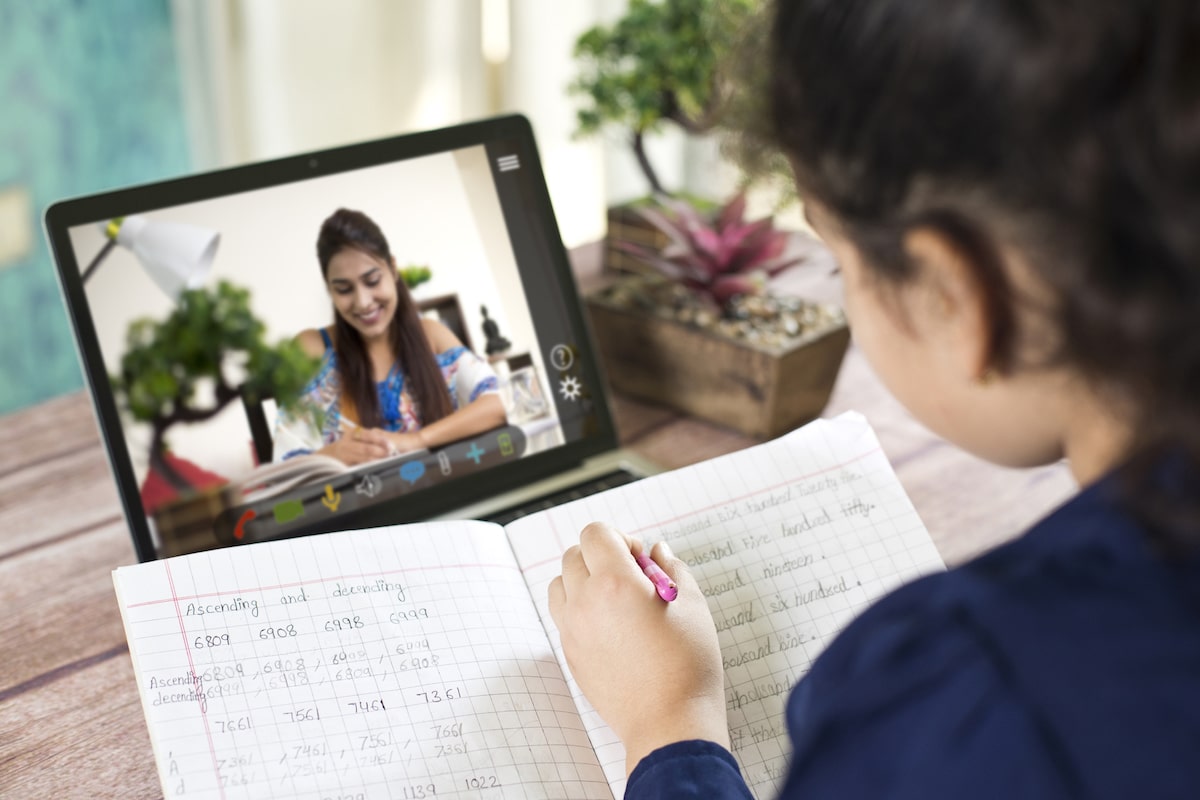<< Back
Today’s Lesson: Ergonomics for Kids During Remote Learning

September 03, 2020
OK, kids. Today’s class is called ergonomics. We’re talking about an applied science, the study of how people work in their environment.
Don’t worry. It’s not that complicated. Ever hear a teacher tell you to sit up straight in your classroom? That’s ergonomics. (Usually) We know you’re spending a lot of time learning at home, but hold that thought.
Really, ergonomics is the workspace (and learning-space) science of avoiding muscle strains in your neck and shoulders, back pain, hand problems and headaches with the proper desk, chair, posture, lighting and computer viewing angle. Even how far you have to reach for markers, Post-it Notes or other supplies makes a difference.
“ need things like that within pretty close reach on their workspace,” says Scott Applebaum, an athletic trainer with the Hartford HealthCare Rehabilitation Network, “whether it’s a kitchen table, arts and crafts table or whatever the case may be. Have all your supplies ready and on hand.”
Here are a few tips, suitable for Post-it Notes:
- Make sure your desk and chair fit your body. With your hands on your laptop keyboard, your elbows should be bent 90 degrees. Your wrists should remain in a neutral position, not bent up or down.
- Look straight into the computer screen, not up or down. If the laptop is too low on your desk, get a laptop stand. Or raise the laptop screen — rest it on a book maybe — and use a wireless mouse and compact keyboard. “Another alternative,” says Aplebaum, “is a sit-stand desk, which you can actually attach to your table and either sit or stand with the laptop on it.”
- Support your back with a small pillow. It helps you sit up straight — your teacher, via Zoom, will be pleased — and will help prevent your shoulders from drooping forward.
- Use the couch for watching TV, not for schoolwork. If there’s no choice, get a lap desk.
- Natural light is best, no light is worst. You’ll feel better, retain focus longer and even sleep better when exposed to natural light.
- Take a break. Your teacher will know when it’s time. In the professional world, workers are advised to follow what’s called the 20/20/20 rule: Stand up perfectly straight every 20 minutes and focus for at least 20 seconds on a distant object at least 20 feet away. “That gets you out of the seated position and into an extended position,” says Applebaum. “It relaxes the eyes, relaxes the neck and takes the strain off the back and hips and knees. It gets you back into focus so you can relax and focus on the next task.
- Keep your space quiet. Remember, this is a classroom — it’s not recess yet. No distractions.